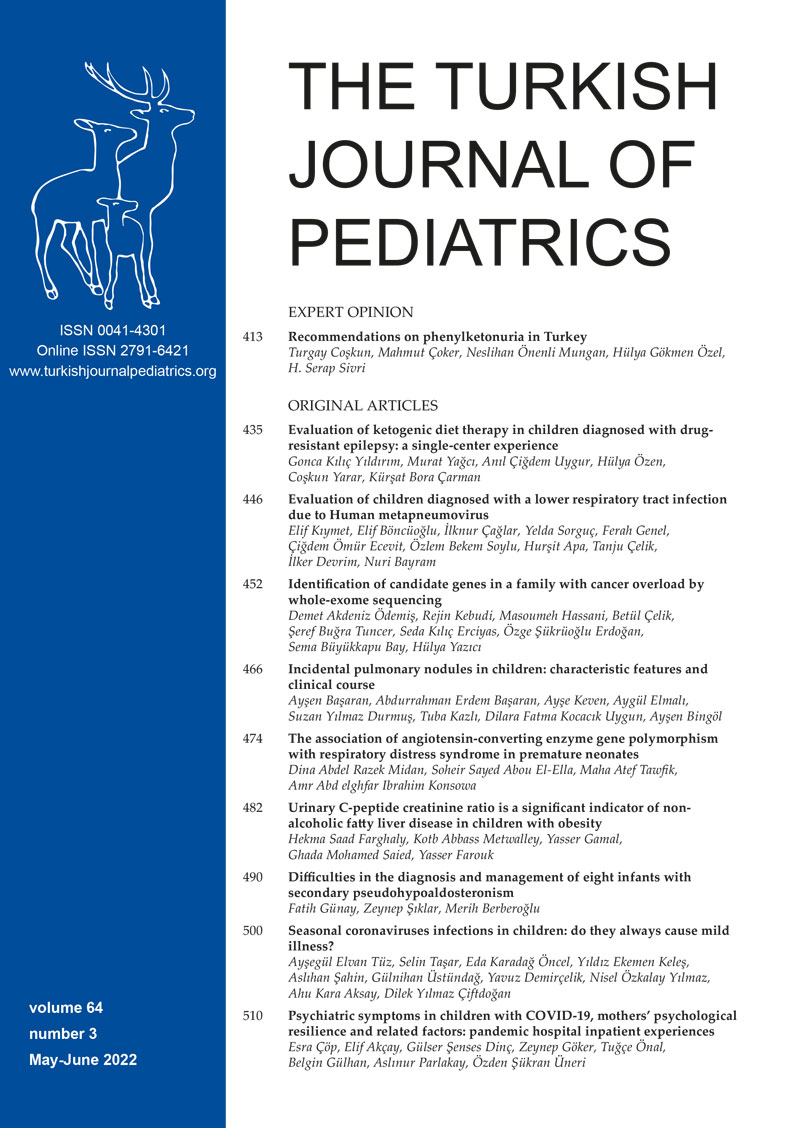Abstract
Background. We evaluate here the effect of the ketogenic diet (KD) on children with drug-resistant epilepsy (DRE) in terms of clinical effectiveness, anthropometric measurements, and some electroencephalogram (EEG) and biochemical findings.
Methods. Included in the study were 18 children (median age 70 months, 61.1% female) who received the classical KD and modified Atkins diet (MAD) for at least one year due to DRE. The patients` demographic and laboratory data; weight, height and body mass index values; EEG and electrocardiographic findings; abdominal ultrasonography findings; and biochemical parameters were recorded at baseline and at 12 months after the initiation of the diet. A reduction of ≥50% in the number of seizures was accepted as a response to KD.
Results. Classic KD was chosen for 14 patients (77.8%), and MAD for four patients (22.2%). The response to KD therapy (≥50% reduction) was 55.5% (n = 10) (p = 0.008), and one patient even became seizure-free. By the 12th month of treatment, 10 patients had experienced a reduction of more than 50% in epileptiform discharges, as indicated by EEG findings. There was no difference in seizure reduction between the patients who received classical KD and MAD. A total of 11.1% of the children lost weight during KD treatment. The most common side effect was constipation (n = 10, 55.6%). At the end of one year of treatment, total cholesterol and low density lipoprotein cholesterol (LDL-C) LDL-C levels had increased dramatically, while fasting blood glucose levels had decreased significantly.
Conclusions. Our study suggests that KD treatment provides good clinical efficacy in the treatment of pediatric DRE, and can significantly reduce the frequency of epileptic discharges. Also, total cholesterol and LDL-C levels increased significantly, and fasting blood glucose levels decreased significantly compared to the baseline levels.
Keywords: child, classical ketogenic diet, drug-resistant epilepsy, efficacy, modified Atkins diet
Copyright and license
Copyright © 2022 The Author(s). This is an open access article distributed under the Creative Commons Attribution License (CC BY), which permits unrestricted use, distribution, and reproduction in any medium or format, provided the original work is properly cited.














